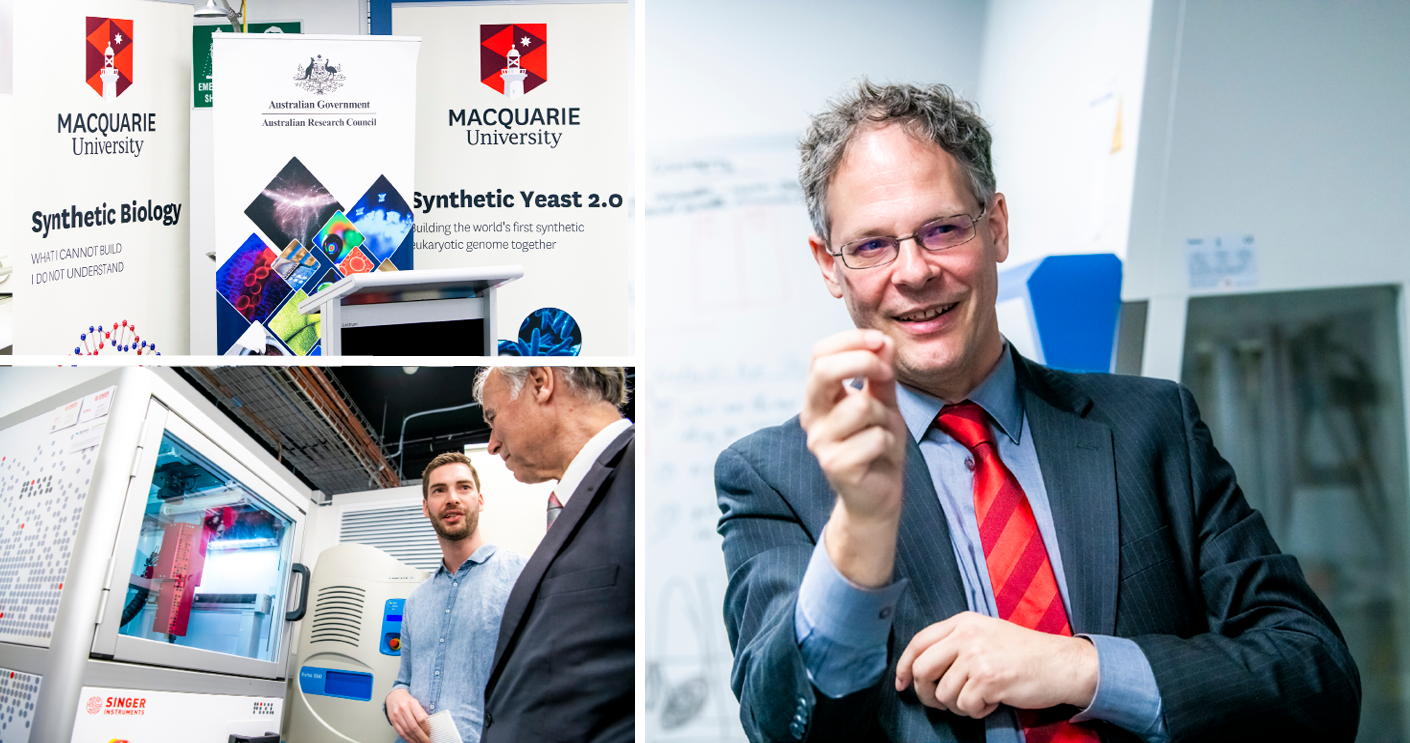Director of the new ARC Centre of Excellence in Synthetic Biology (CoESB), Distinguished Professor Ian Paulsen.
You will no doubt have seen the good news last week that an ARC Centre of Excellence in Synthetic Biology (CoESB) will be hosted at Macquarie University from 2020, with $35 million in funding from the Federal Government.
The Centre will be one of the largest combined efforts in synthetic biology in the world – a collaboration between seven Australian universities and 25 partners worldwide. So, how do you even begin to grapple the collaboration management of so many contributors – let alone do it successfully enough that the government gives you $35 million?
According to the Centre’s Director, Macquarie University’s ARC Laureate Fellow Distinguished Professor Ian Paulsen, and Deputy Director, University of Western Australia’s Professor Aleksandra Filipovska, the key to success is bringing together groups or researchers with different capabilities and approaches to do something that they couldn’t possibly achieve separately.
“That kind of collaboration is central to the very idea of Centres of Excellence,” Ian says. “All these researchers could be funded separately, but it’s the scientific and creative mix that allows them to jointly do something greater than the sum of its parts.”
Within the Centre of Excellence in Synthetic Biology (CoESB) itself, there are not only leading synthetic biologists, but also industrial translators such as chemical engineers for example, and it is this combination that will allow the work to have real world impacts.
Aleksandra says clear communication between these groups is particularly important.
“A successful collaboration is a product of synergistic expertise working as a cohesive unit with clear communication.”
So, where do you start?
The beginning, it turns out – is a very good place to begin.
Both Ian and Aleksandra highlight the need to understand what the end goals are, or at the very least what they could be, and then seek prospective collaborators who have the skills, expertise and equipment that you think you might need access to.
“In some cases, they’re people you immediately think of because you know their work, and can see they’d be a natural fit,” says Ian. “But sometimes you don’t even realise you need someone until you meet them or hear of them. And then you realise they’ve got a skill or an approach that you hadn’t thought of that could be of benefit to the project.
“Chance plays a part. So does advice from peers, seminars, conferences and visits from colleagues outside the University and outside your own area.”
Fostering the right environment
On a project as large as this one, it is imperative and critical for success to create an atmosphere of collaboration and transparency.
Ian explains that for this Centre the team has set up a number of ‘carrots’ to encourage interaction.
“There will be staff and student exchanges and specific activities for fostering collaboration.”
As well as this, cross-disciplinary staff will be embedded within the Centre, to increase everyone’s exposure to the different areas.
“So, there will be social scientists in the same place as wet lab scientists, all talking to each other.”
The nitty gritty
Ian explains that the very nature of these types of projects lend themselves to differing opinions.
“There’s always going to be differing opinions – we’re all human,” he says. “But it’s important that we establish open dialogue from the very beginning. If there are clear communication lines and transparency, most disputes can be settled painlessly and I don’t expect that it’s something that we’re going to encounter very often.”
Leaving their mark
Aleksandra explains that what makes this project so special is the potential to leave a long-term legacy that will make the Australian economy stronger, provide new tolls for industry, agriculture and medicine, and produce the next generation of scientists and social scientists.
Ian adds that the sheer scale and time of the Centre’s funding allows the team to take risks.
“Because it’s a seven-year arrangement, it gives us the freedom to work on really exciting high-risk, high-reward work that we would never have the security to do with three-year funding.
“It also brings together such an array of skills and interests and allows us to collaborate with people that we’d never encounter otherwise.”
Learn more about Synthetic Biology and the new Centre of Excellence in the Macquarie University Newsroom.


 Back to homepage
Back to homepage
We are looking this website for post https://www.mq.edu.au/thisweek
I am working from some years and our company is well-reputed. We have lots of clients for whom we are working. our client need good sites with the following features Alex Rank – Less than 1000000
OR
DA 50+
Sites so please send me sites with post price.
Note – Do not send me sites, you can not post our article with do-follow link..
We will send you payment within 48 hours after publishing post and we will send to our clients as the approved we will send u payment with 48 hour
Waiting